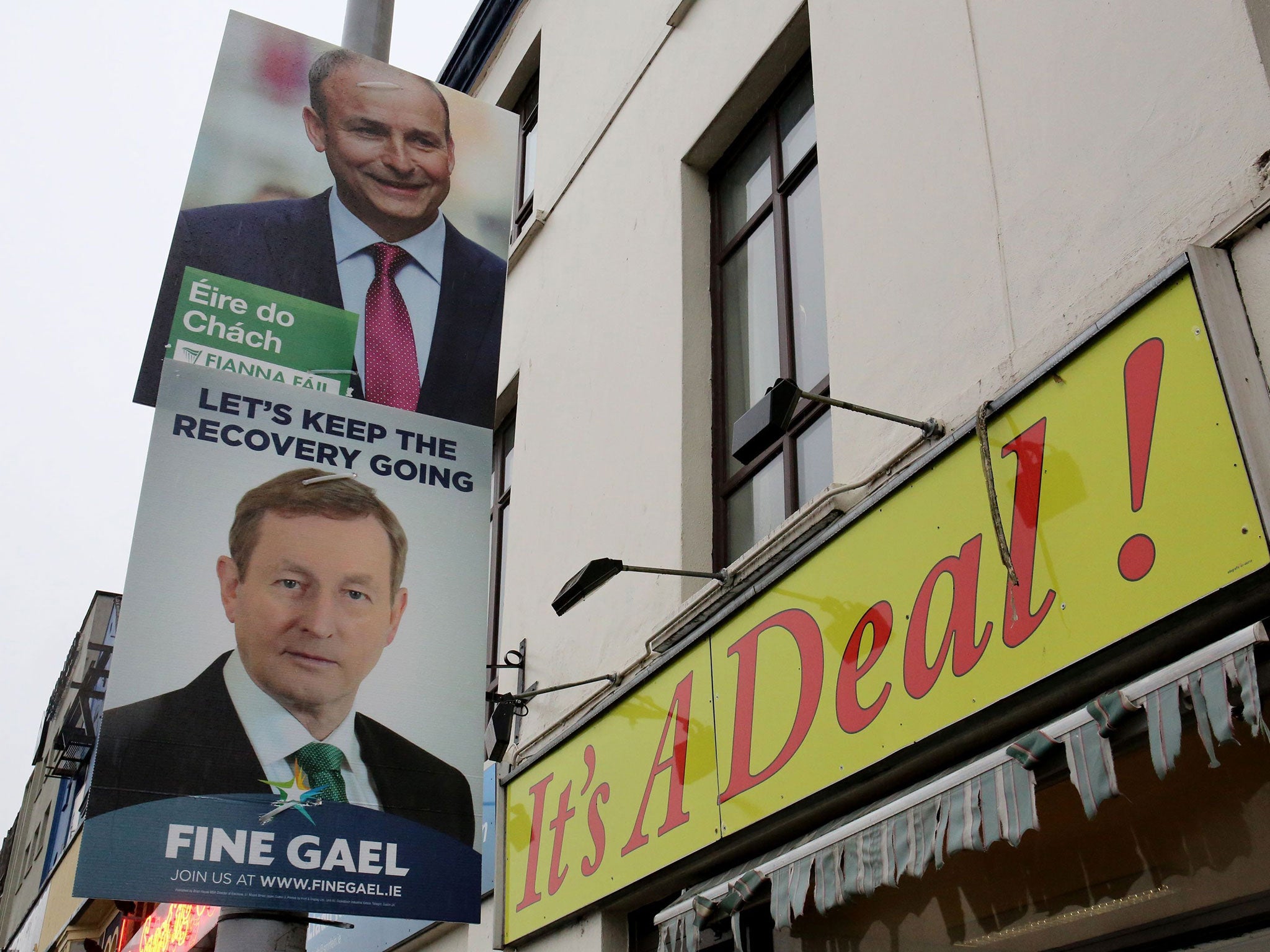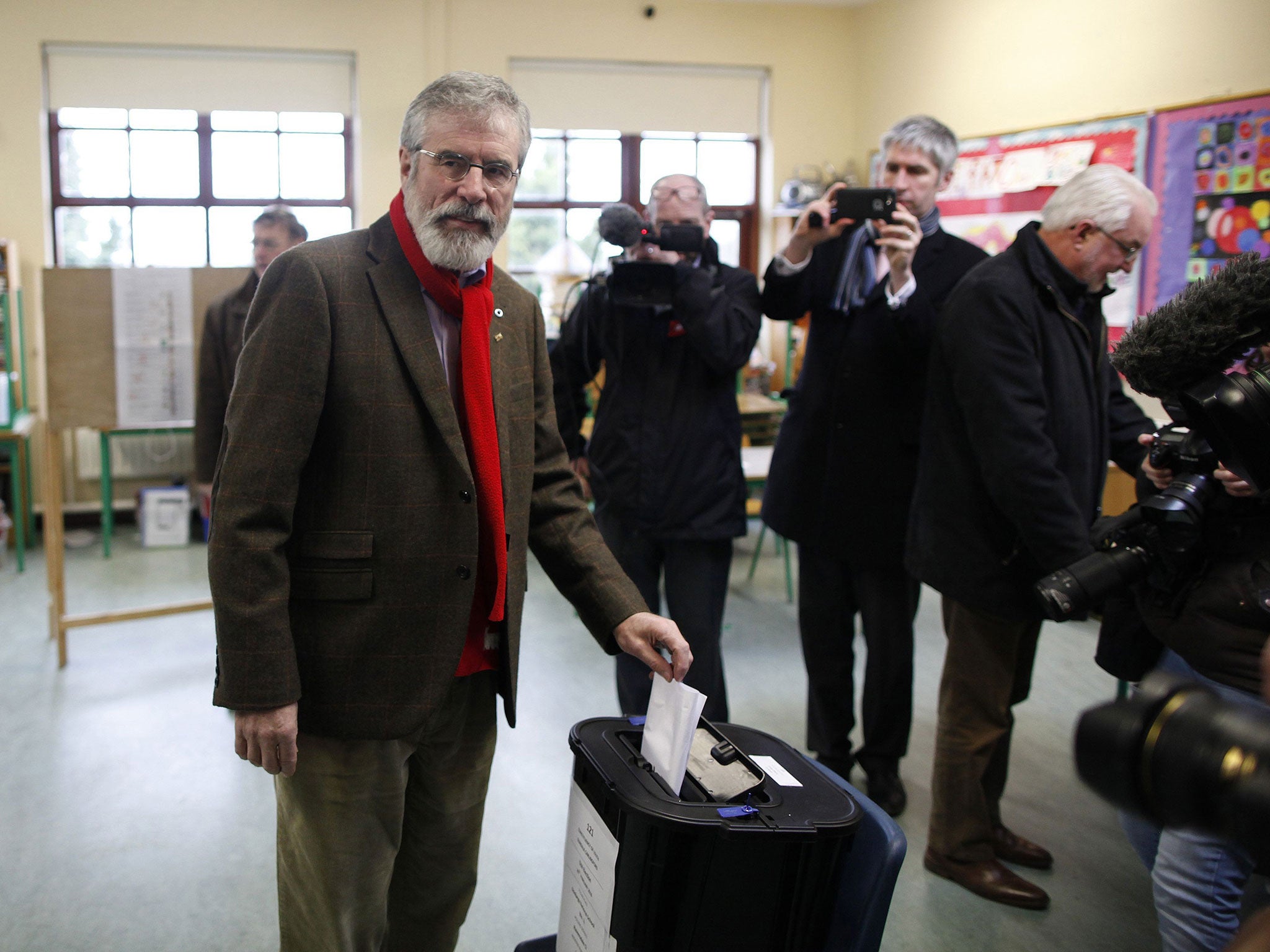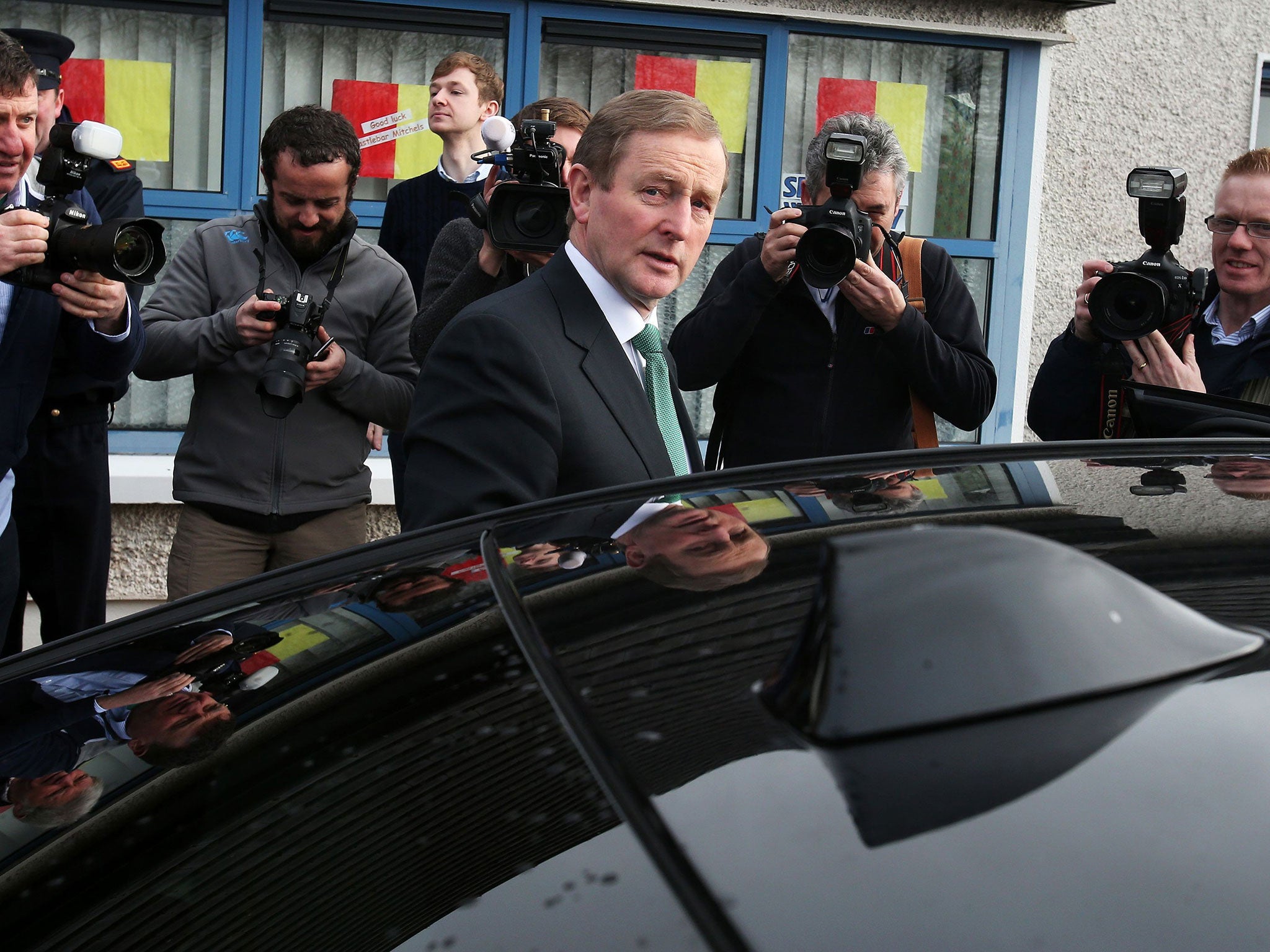Irish election: Coalition government takes a hammering, exit polls show
Fianna Fail, Sinn Fein, Independents, smaller parties and newcomers all made significant gains

Your support helps us to tell the story
From reproductive rights to climate change to Big Tech, The Independent is on the ground when the story is developing. Whether it's investigating the financials of Elon Musk's pro-Trump PAC or producing our latest documentary, 'The A Word', which shines a light on the American women fighting for reproductive rights, we know how important it is to parse out the facts from the messaging.
At such a critical moment in US history, we need reporters on the ground. Your donation allows us to keep sending journalists to speak to both sides of the story.
The Independent is trusted by Americans across the entire political spectrum. And unlike many other quality news outlets, we choose not to lock Americans out of our reporting and analysis with paywalls. We believe quality journalism should be available to everyone, paid for by those who can afford it.
Your support makes all the difference.Exit polls in the Irish general election have shown the outgoing coalition government has taken a hammering.
With the counting of around two million votes to begin on Saturday morning, the ballot is set to throw up the most diverse Dail parliament since the foundation of the state more than 90 years ago.
The outgoing Fine Gael/Labour partnership suffered huge losses, the polls showed.
Fianna Fail, Sinn Fein, Independents, smaller parties and newcomers all made significant gains, according to the survey of people leaving polling stations by pollsters Ipsos MRBI for the Irish Times and by Behaviour and Attitudes for state broadcaster RTE.
The first showed Fine Gael on 26.1 per cent of first preference votes; Labour on 7.8 per cent; Fianna Fail on 22.9 per cent; Sinn Fein on 14.9 per cent; Anti Austerity Alliance/People Before Profit on 3.6 per cent; Greens on 3.5 per cent; Social Democrats on 2.8 per cent; Renua on 2.6 per cent; and others on 16.1 per cent.

RTE's showed Fine Gael on 24.8 per cent of first preference votes; Labour on 7.1 per cent; Fianna Fail on 21.1 per cent; Sinn Fein on 16 per cent; Anti Austerity Alliance/People Before Profit on 4.7 per cent; Greens on 3.6 per cent; Social Democrats on 3.7 per cent; Renua on 2.4 per cent; Independents on 11 per cent; and the formal Independent Alliance on 3 per cent.
The results will ask serious questions of Fine Gael leader and outgoing Taoiseach Enda Kenny over how he blew such goodwill and a big majority after the party's best ever election result in 2011.
Labour leader and outgoing Tanaiste Joan Burton first has the massive hurdle of retaining her seat before questions will turn to her leadership and choices in government.

However, the figures come with a health warning, given Ireland's unusual and complex single transferable vote system.
It points to a hung parliament, with the voter schism threatening to blow apart a duopoly enjoyed for more than 80 years by Fine Gael and Fianna Fail, which swapped power for generations.
There is also the prospect of a minority government taking power or a previously unthinkable coalition between the old civil war parties bringing the curtain down on decades of bitter rivalry in time for the 1916 Easter Rising centenary.
But seasoned commentators warn about the instability of such a scenario, not to mention it was adamantly ruled out by all of the senior figures in both parties during the lacklustre campaign.
Such a groundbreaking shift could also open the first definitive right/left divide in the Dail.
Another scenario is the possibility of a rainbow coalition of Fine Gael, Labour and some smaller parties but looking at the numbers it would involve a hotchpotch of members in order to reach the magic working majority of around 80 seats.
More than 550 candidates fought in 40 constituencies to become one of just 158 TDs - eight seats fewer than the 2011 election when Fine Gael and Labour took office promising a democratic revolution.
Once a clear picture emerges from the weekend counting of votes, the parties will have until March 10 - when the Dail is scheduled to resume - to forge a power-sharing deal.
The spectre of a second election will loom over any uncertainty.
As polling stations closed at 10pm on Friday, political parties were estimating around two thirds of the 3.3 million-strong electorate voted.
PA
Join our commenting forum
Join thought-provoking conversations, follow other Independent readers and see their replies
Comments